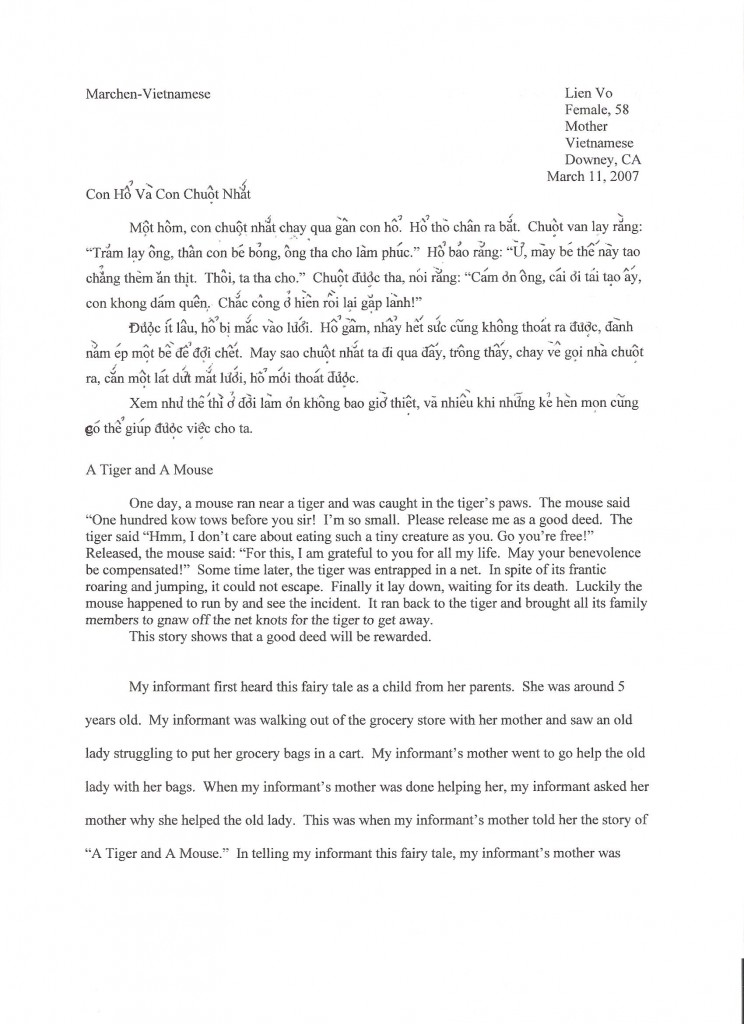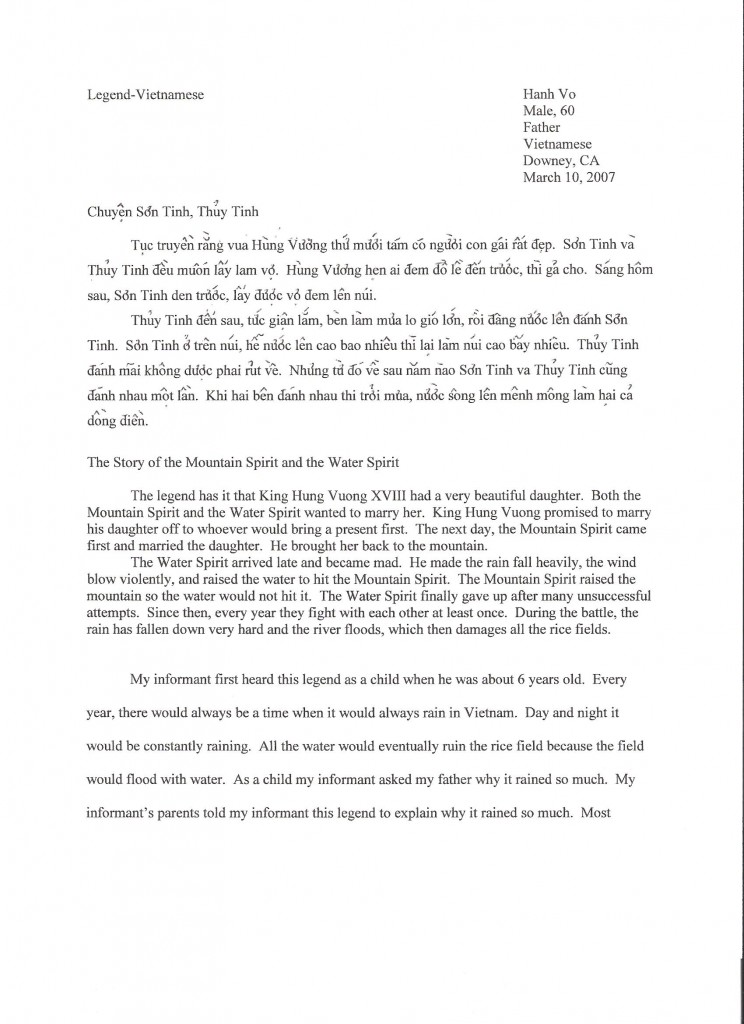The Legend of Hai Ba Trung
The Legend of Hai Ba Trung refers to the Trung sisters. Around 111 B.C. the Chinese annexed Vietnam. The Chinese sent officials to govern the province of Vietnam. The Vietnamese were not allowed to keep their own system of government. In 39 A.D., the Chinese governor of Chiao Chi wanted to scare some of the Vietnamese landlords by assassinating one of them. The man who was assassinated was the husband of Trung Trac. She was very well educated and strong minded. She also was very familiar with the military arts. She called her sister, Trung Nhi, and together they formed an army with the help of other lords. This was the first Vietnamese revolt.
My informant first heard this legend when she was a child. She heard it from her parents when she was around the age of 8. She heard it from her father, who was telling all her brothers and sisters some war stories in Vietnams history. Vietnam was annexed by China for many years and this legend is so popular because not only was it the first legend of Vietnamese people fighting for their freedom against China but because it was two women who first started the rebellion. My informants father told his children this story to remind his children of Vietnams past and what the country of Vietnam has been through. My informants father told his children this legend to teach them to be grateful for those who fought for Vietnams freedom. If it was not for the many historical heroes who fought against the Chinese, Vietnam would still be under the powers of China.
The Trung sisters are now celebrated today as Vietnamese heroes. There are many statues and shrines that are dedicated to them in Vietnam. The revolt of the Trung sisters is one of the most celebrated in Vietnamese history. It is the most celebrated because the victory of the Trung sisters secured independence from China for the first time in a century and a half. However, their victory was cut short when in 43 A.D. the Chinese returned to retake Vietnam. Instead of being captured by the Chinese, the sisters drowned themselves in the Hat-Giang River on the 60th day of the second lunar eclipse. Every year, a festival is held in honor of the Trung sisters. The festival is held on the 15th day of the first lunar month. The festival is held every year to remind the Vietnamese culture who these women were and what they did for the country of Vietnam. They fought for what they believed in and this legend helps teach Vietnamese people to fight for what is right. This legend is meant to help people have faith in themselves and give people motivation to fight for what they believe in.



